
Toronto's waterfront is getting a new red hut where you can isolate and contemplate life
From light festivals to music festivals, the city is known to celebrate its vibrant art scene in all forms. Although it's the midst of winter you can still check out some outdoor art installations because Toronto's waterfront is getting a new red hut where you can isolate and contemplate life.
The annual Winter Stations exhibition is back this year, returning to Woodbine Beach with larger-than-life installations that you can check out during the frigid months.
This year's theme is resilience, which is very fitting with the past few years we have had.
"This year, we not only reflect on all the ways people have had to be resilient, but the ways people have channeled this resilience, be it through communities, movements, support networks, and more," says Winter Stations about the theme.
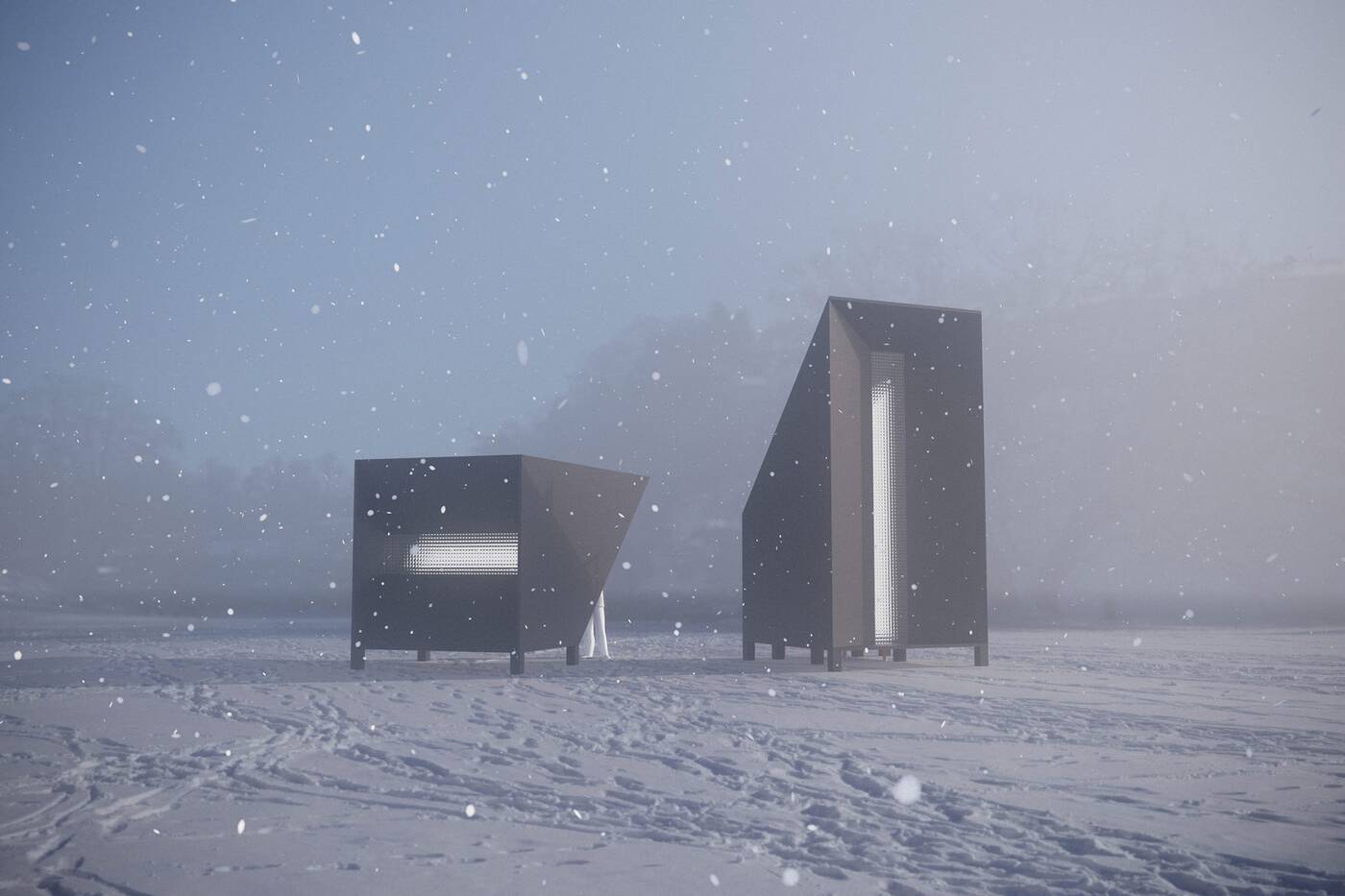 The designs this year include works that show how the pandemic has shifted the way we perceive and interact with the world, as seen in Enter Face by MELT, a Turkish design team.
The designs this year include works that show how the pandemic has shifted the way we perceive and interact with the world, as seen in Enter Face by MELT, a Turkish design team.
The installation is made up of two boxes, where the viewer on the inside then becomes the image on the screen for viewers on the outside.
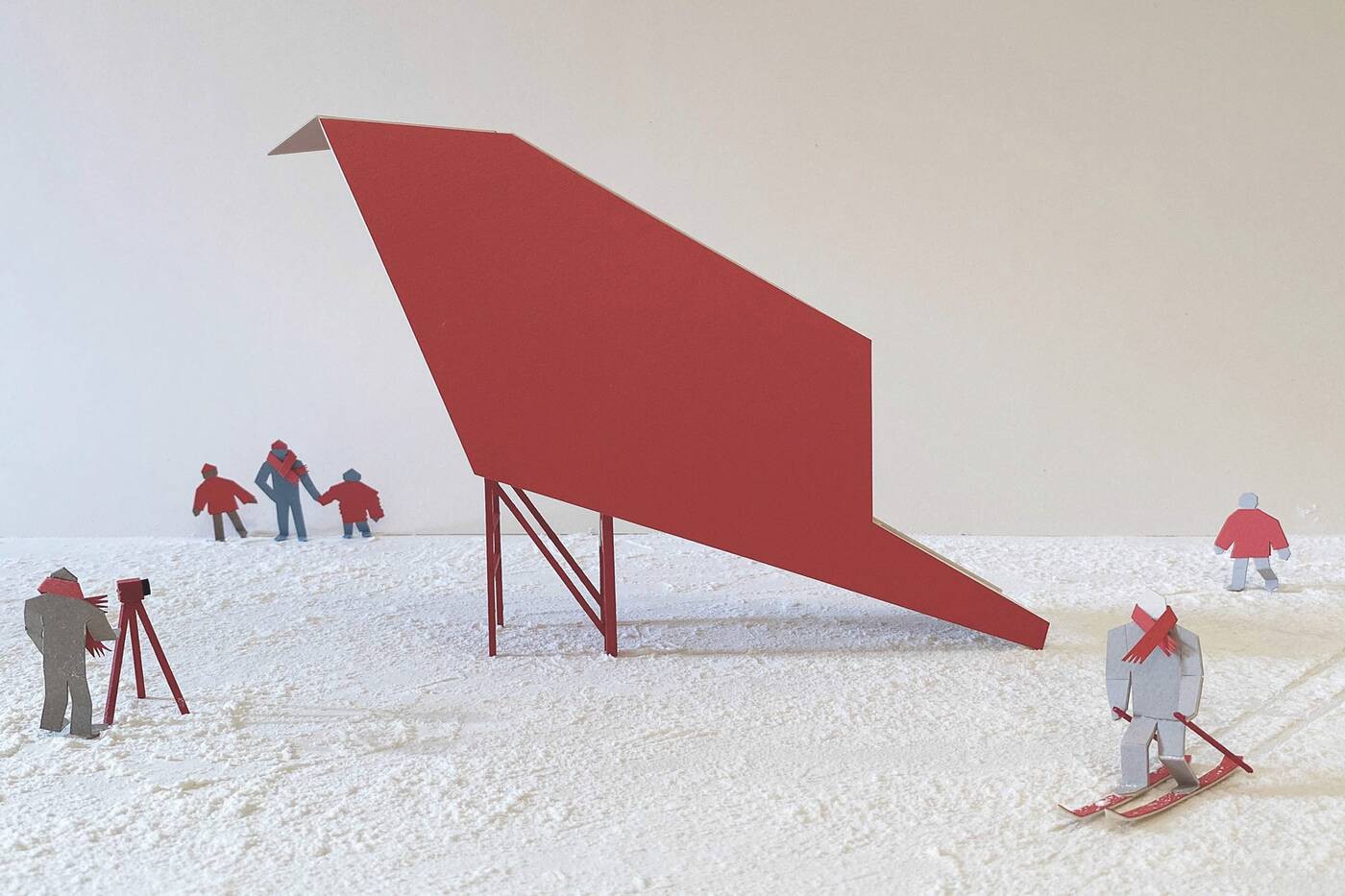
Up next is Wildlife-guard Chair by Mickael Minghetti and Andres Jimenez who use the lifeguard chairs at the beach to create their sculpture.
The team was inspired by the northern cardinal bird for their design. Their work seeks to engage viewers with Toronto's wildlife.
Then there's The Hive by the Canadian artists Kathleen Dogantzis and Will Cuthbert. Bring a rainbow of colour to the beach, their design was inspired by the resilience of a beehive.
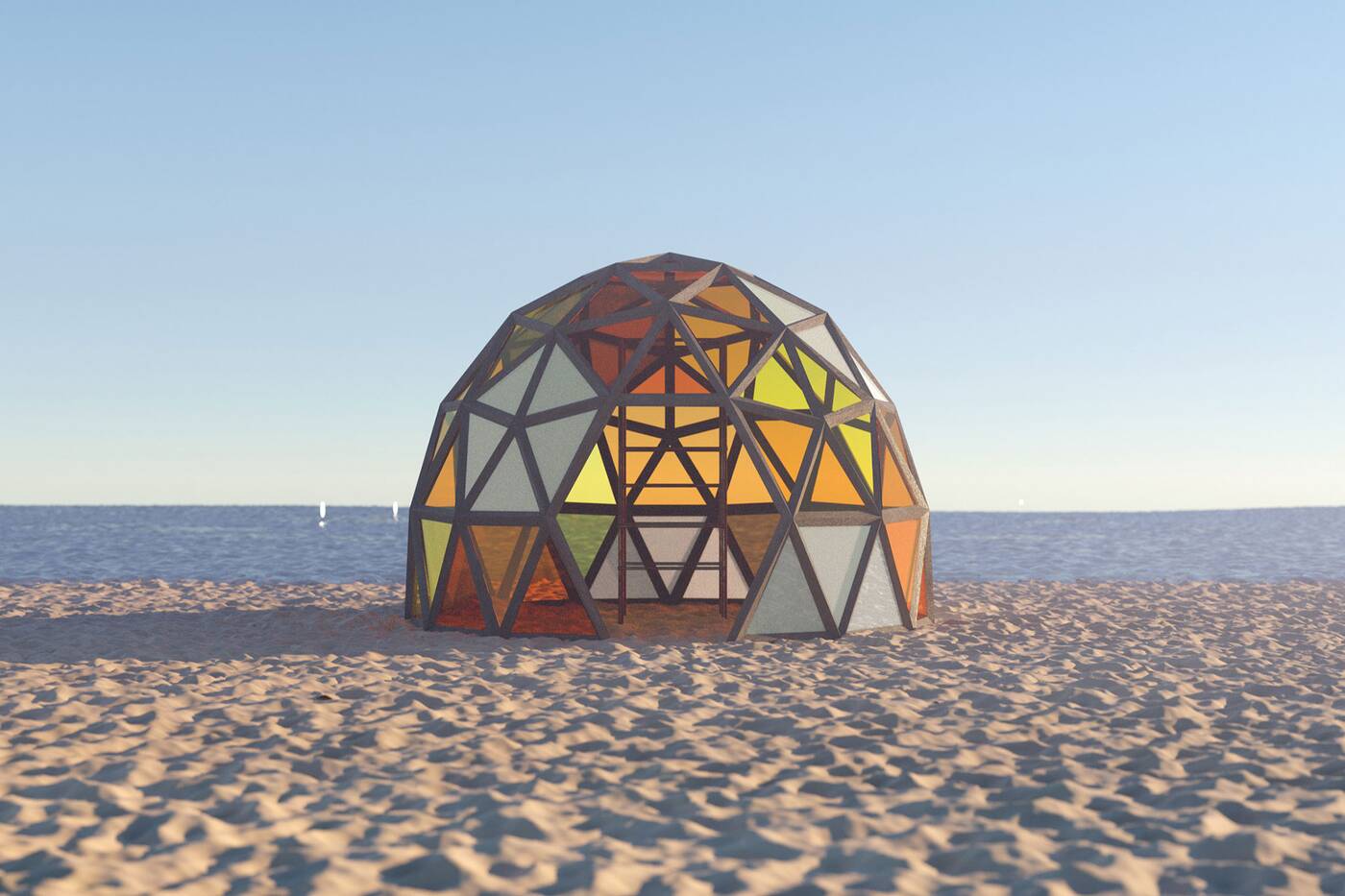
The hexagonal structure with highlights of different colour represents a collaborative community that is "mounted in the face of adversity".
You're encouraged to go inside the hive and experience the colourful and visual diversity of the beehive.
Just like Wildlife-guard Chair, S'winter Station by the Ryerson University's Department of Architectural Science also uses the lifeguard chair as part of the installation.
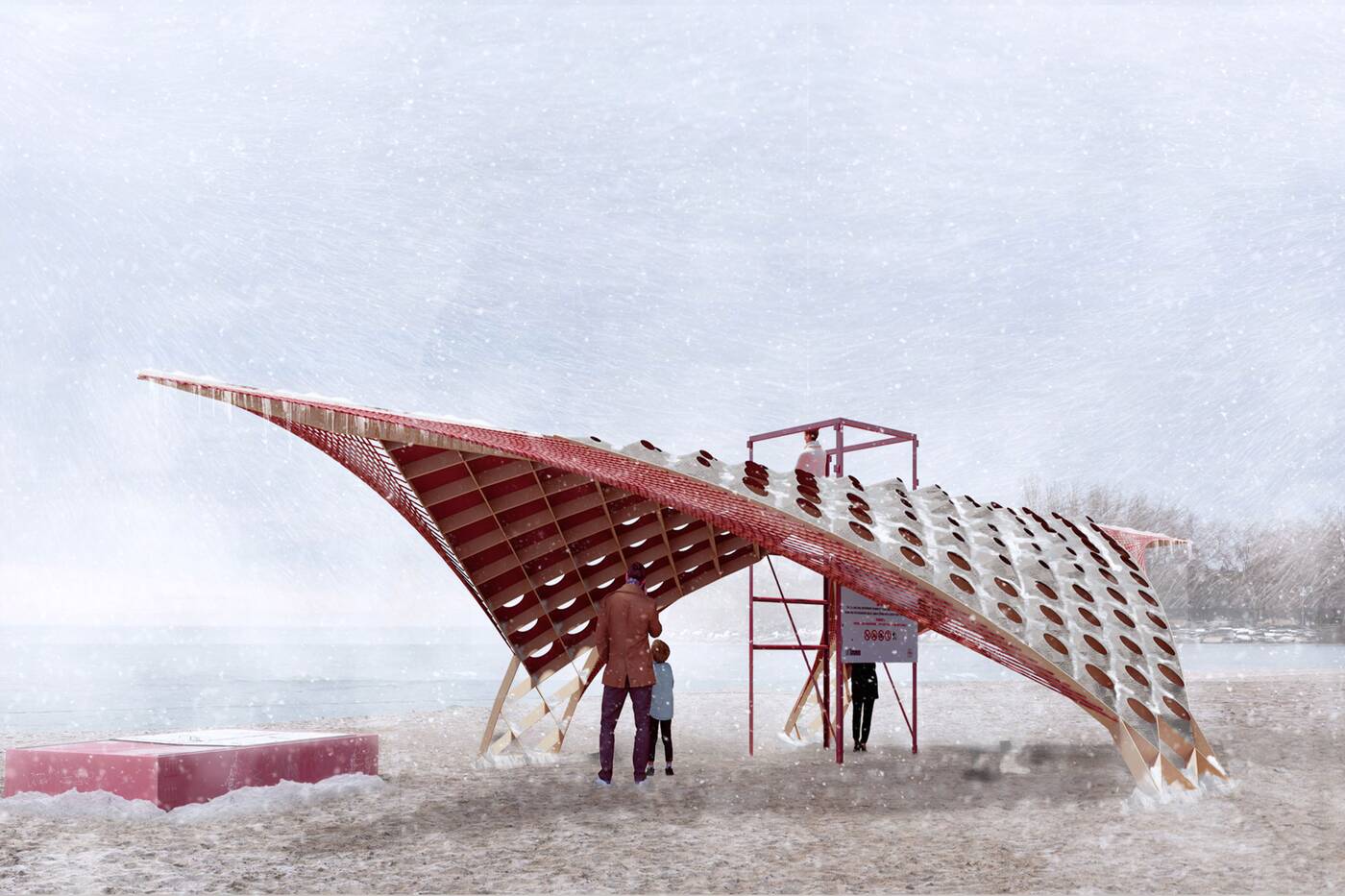
The pavilion's wings embody the movent of the weather conditions and control the amount of light and snow allowing to enter through.
The pavilion also acts as a shelter during the frigid months and to celebrate the winter conditions as it adapts to the weather.
Introspection by UofT's John H. Daniels Faculty of Architecture based their design on the emotions of the loneliness felt during the past few years of quarantine and restrictions.
The team used the idea of reflection and used mirrored walls to make the visitor the subject in the red pavilion. The roof allows sunlight to light up the room and the viewer to reflect not only on themselves physically but also emotionally.
Being faced with the frigid winter, the installation reminds us that no matter what life may throw at us, we endure it all and remain resilient to adversity.
The last sculpture is One Canda by the University of Guelph School of Environmental Design & Rural Development. Inspired by the Indigenous People of Canada, their piece reflects on the resiliency through generations of oppression.
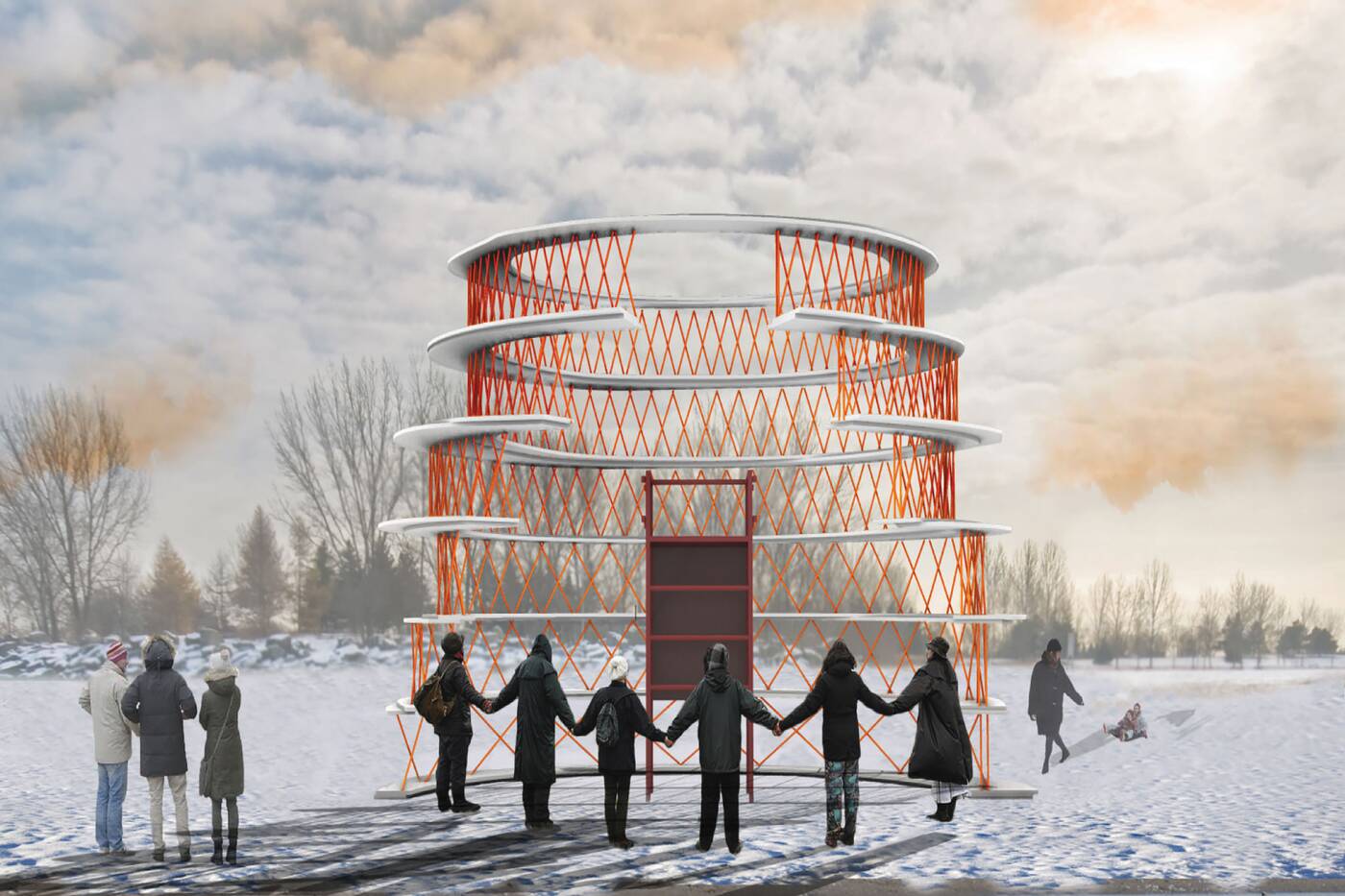
The woven orange rope through the installation represents the creation of drums that honour the culture. The piece then gravitates towards the centre where the lifeguard chair stands and represents the relationship between Canada and Indigenous Peoples.
Winter Stations is set to return to Woodbine Beach on Feb. 21 through March 31.
If you can't wait to check out some outdoor installations, Festival of Cool has Nordic light sculptures set up around Harbourfront starting Jan. 27 through Feb. 13.
Introspection at Winter Stations 2022
Latest Videos
Latest Videos
Join the conversation Load comments







